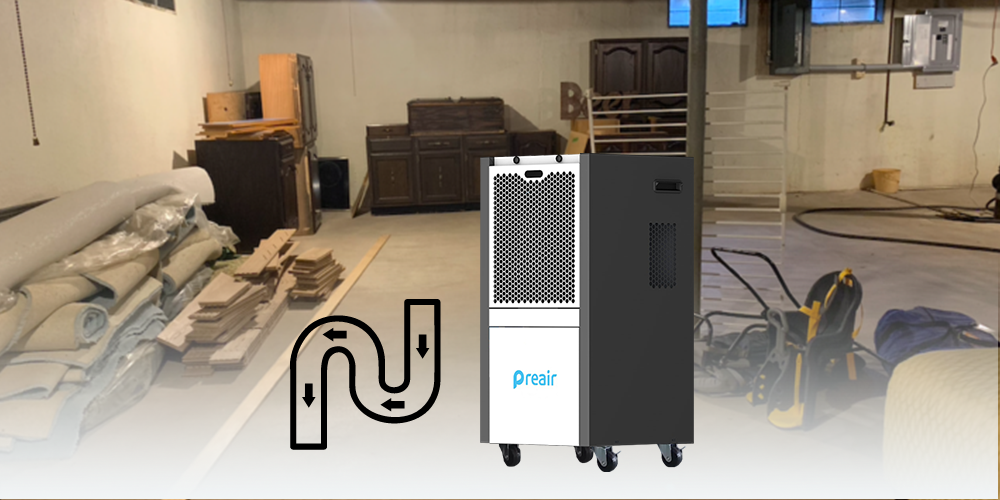Draining a dehumidifier in a basement is essential to keep it running efficiently and prevent water overflow — especially since basements usually stay humid for long periods.
1. Three Common Drainage Methods
Option 1: Dehumidifier with Water Tank
The basement dehumidifier collects water in an internal tank that you need to empty by hand.
Steps:
Wait until the "Full Tank" indicator turns on.
Turn off the unit and remove the water bucket carefully.
Empty the water into a floor drain or sink.
Reinsert the bucket securely — the unit won’t restart if it’s not properly seated.
Best for: Occasional use or slightly damp basements.
Drawback: Frequent manual emptying can be inconvenient in very humid areas.
Option 2: Dehumidifier with Continuous Gravity Drain
Water drains automatically through a hose by gravity.
Steps:
Find the drain outlet (usually on the back of the unit).
Attach a standard garden hose firmly to the outlet.
Make sure the hose runs downhill to a floor drain or sump pit — no upward bends!
Test by running the dehumidifier to confirm steady water flow.
Best for: Basements with a floor drain nearby.
Tip: Keep the hose end below the unit’s drain port level to maintain good flow.
Option 3: Dehumidifier with Built-in Pump (or External Pump)
Some commercial dehumidifiers have an internal pump that pushes water vertically, useful when the drain is higher than the unit.
Steps:
Connect the pump outlet to a PVC or vinyl hose (often included).
Place the hose end into a sink, window well, or utility drain up to the height recommended (usually ≤15 ft).
Turn on the "Pump" mode (if available).
Best for: Basements with no floor drain or when the only drain is at a higher level.
Tip: Clean the pump and hose regularly to prevent clogs or mold buildup.
2. Maintenance Tips
Clean the drain hose monthly to avoid mold and algae buildup.
Check for kinks or bends that might block water flow.
Inspect the drain tray and make sure it’s properly aligned.
Use Teflon tape on hose connections if you notice any leaks.
Summary Table
|
Drain Type |
Needs Manual Work? |
Drain Location Needed |
Ideal Situation |
|
Bucket |
Yes |
None |
Small or low-humidity areas |
|
Gravity Drain |
No |
Floor drain (lower than the unit) |
Standard basements |
|
Pump Drain |
No |
Sink/ window well/ higher drain |
No floor drain or distant drain |
Post time: Oct-29-2025


